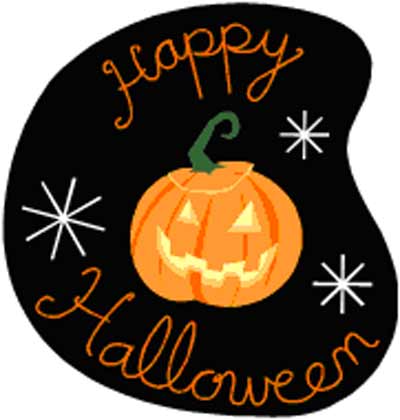The much celebrated holiday of Halloween is said to go back over 2,000 years ago to an ancient Celtic Festival marking the end of summer and the harvest, and the beginning of the dark, cold winter.
It was a time of death and the Festival was associated with death. The Celts lived in the area we now call Ireland, Scotland, Wales, England and northern France.
These festival, known as Samhain (pronounced sow-in) was celebrated on October 31, the night before the New Year. It was at midnight that the dividing line between the living and the dead became blurred.
It was believed that the ghosts of the dead who were not yet "resting in peace" returned to earth. Their presence was said to wreak havoc on crops and property as well as physical health.
From their vantage place of being in the "other world" they were able to "see" and "know" things mere mortals were not, and they used this time to pass on some of these omens to the Druids (Celtic priests) allowing them to make predictions about the future.
To observe the event all hearth fires were extinguished and the priests created the only light source: huge bonfires. Here the people burned crops and animals in sacrifice to the Celtic gods. Animal heads and pelts were worn as costumes and everyone tried to absorb the messages of the "undead" so they could predict each other's futures.
Hearth fires were relit at the end of the festivities with fire from the bonfire which was hoped to provide the power to protect the people during the cold winter ahead.
The Romans eventually conquered the majority of the Celtic territory and combined the Celtic festival with their own. The Roman festivals included Feralia, (celebrated at the end of October and was a day to honor the deceased) and Pomona (in honor of the Roman goddess of trees and fruit). The symbol of his goddess was the apple and may actually be the root of today's association with Halloween and apples.
Finally the Christian influence spread to the Celtic lands and in the 800's Pope Boniface IV attempted to replace the pagan ritual of honoring the "undead" with a holy day sanctioned by the church and celebrating saints and martyrs of the Christian faith. The feast was named All Saints' Day and was (and still is) celebrated on November 1st.
The eve of this holy day, the day that was once used to celebrate Samhain became All Hallow's Eve - and eventually Halloween. In about the year 1000, the Church added a holy day to honor the dead - and made November 2nd All Soul's Day.
English towns and villages held parades honoring the Christian holy day of All Soul's Day. The poor people of the city would use this opportunity to beg for food for their families. Deals were struck with the well-to-do folk; they would give pastries and cakes (often referred to as soul-food or soul-cakes) in exchange for the beggars promise to pray for them and their families.
The Church was very much in favor of this practice for many reasons - it encouraged kind deeds, it encouraged prayer and maybe most importantly it discouraged the practice of leaving food out for the spirits of the undead.
The practice was called "going a-souling" and often times it was the young children sent out from house to house to beg for food, thinking that a child was less likely to be turned away and a child's prayers were always heard by God.
Eventually Europeans began to immigrate to America, and naturally brought many of their customs and traditions with them. In those early colonial times the celebrations were scarce in New England were very strict Protestant religious beliefs ruled the land.
The further south into the colonies you were, the more you would find Halloween celebrations. As far into American history as the nineteenth century found Halloween only celebrated in a portion of the country.
Over the years the celebrations from a multitude of European backgrounds along with the American Indians' harvest celebrations formed something very close to the Halloween we celebrate today.
Children would "threaten" small pranks and mischief if they were not given a nice treat, and of course, that became the "trick-or-treat" concept we still use to this day.
It is estimated that nearly $7 billion is spent annually on Halloween, making it the country's second largest commercial holiday. The first, of course, is Christmas, which is, ironically another religious holiday.

Top of Page
Back to Halloween

